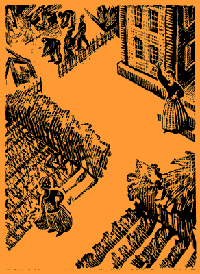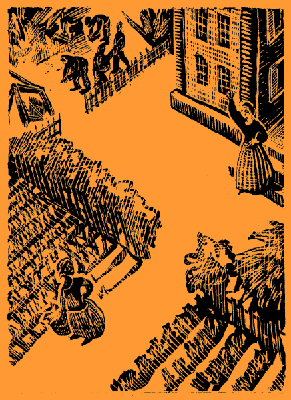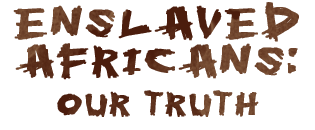
Oyeladun - Life in the Americas
This place is a sugar plantation. I weave and dye cloth with the white mistress and two other slaves whose words I don't understand. I remember my mother when I work. The white mistress is not like the white men but still hits us if we are slow or make a mistake. The white men watch - I fear them.
I am relieved I am not in the fields. I hear the white man called the overseer shout and beat the men and women. They weaken everyday - some have died already.
Working at the house

Sugar Plantation
A sugar plantation is a large farm where sugar is grown. The sugar trade on Barbados began in around 1640. By 1667 there were 745 plantations owners and 80,000 slaves cultivating sugar. The rapid growth of the trade, and a shortage of local and imported labour, resulted in traders turning to African slavery.
Weave and Dye
Not all slaves worked in the fields. From the late 18th century women sometimes worked at the plantation's main house as servants, dressmakers, nurses and cooks.
Understand
White traders took people from many areas of Africa, each with its own language and customs. Once these people were mixed together on a plantation in Barbados they quickly began to lose their sense of cultural identity. The white people identified the slaves by their colour, but the Africans themselves had little feeling of black unity.
White mistress
The white mistress is typical of some 18th century Christians who thought it was possible to treat a slave relatively well while denying them freedom. Some Christians were concerned with saving a slave's soul rather than saving their body, so thought it acceptable for a slave to suffer.
Overseer
The overseer was the person who supervised the slaves while they worked. He was usually white but some were promoted slaves who were often as cruel as the white overseers.
Died
As many as one in three Africans died during the seasoning period - the three or four years when they had to adapt to their new lives. Sugar plantations were particularly dangerous places as the work was so physical. As more slaves died so more Africans were captured and shipped to the Americas to replace them.


